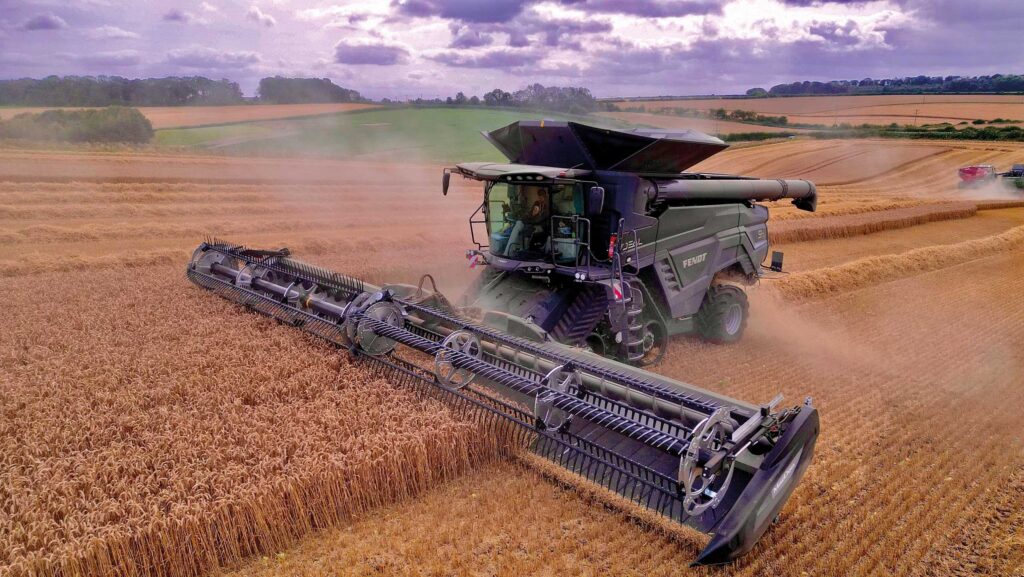Harvest 24: Milling wheats struggle to hit protein specs
 © Sam Bannister
© Sam Bannister Spring barley has not disappointed the maltsters, with good quality grain entering stores so far.
However, a trend is emerging for low proteins in milling wheat.
See also: Harvest 2024: The 5 top-yielding winter wheat varieties map
Wiltshire
Harvest has made good progress across the South, although late-drilled spring barley is still not fit. “Yields are better than expected on some farms,” says Sean Crombie, store manager at Trinity Grain. “Back in April members didn’t expect to fill their space, but several are now looking for more.”
Malting barley has been of very good quality, with low nitrogen, averaging 1.55%, possibly due to the higher yields.
Wheat intakes were 82% complete as of Tuesday (27 August), with Crusoe protein at high 13%. However, Palladium, Skyfall and Extase were all suffering from low protein at about 11.7%.
“Hagbergs have been amazing at 300-330,” says Sean. And specific weights are good, at 82kg/hl for earlier-drilled crops and 76kg/hl for later crops.
Marrowfat and yellow peas are looking to be of nice, clean, quality, as are the early beans.
Lincolnshire
Yields have also been very uneven in Lincolnshire, with some poor crops yielding a pleasant surprise, and others proving disappointing.
A common theme that Dan Murphy, operations manager at Woldgrain, picked out is the high level of ergot. “We’ve taken in 14,500t of wheat and 54% of it has ergot in it,” he says. “We might be heading towards a new record.”
Barley has also been affected, with 30% of samples contaminated. “We have a colour sorter, so that will be going flat out after harvest,” says Dan. That aside, barley quality has been excellent; the 13,000t of predominantly Planet and Laureate spring barley had good germination, very low nitrogen, decent specific weights, and low screenings.
However, harvest is running exceptionally late, with only 58% of the total crop intake seen so far. Later drilled crops will not be so exciting, predicts Dan.
Of the wheat, low protein is a common trend – Skyfall has averaged 12.2% and the Group 4 hard wheats are at just 8-9%.
“We would normally use anything over 10.7% for hard biscuit wheat, but some is in the sevens.” He attributes this to early-applied nitrogen washing away in the wet weather. However, specific weights are strong and Hagbergs are fine so far.
“Oilseed rape has been a disaster – it’s the first year we can fit it all in one bin, and half of those growers are saying they’re not growing it again.”
Staffordshire
Unfortunately, this year has been the worst harvest Stephen Sant has known at Model Farm, near Stoke-on-Trent. Having lost a third of his oilseed rape to flooding, the remaining Antigua yielded 2.2-3.7t/ha; below last year’s 3.9t/ha.
The 24ha of Tardis winter barley yielded 5.5t/ha at 68kg/hl – down on last year’s 6.9t/ha. “I am disappointed, but we will just have to take a hit,” says Stephen, a quarter of whose farm area went unplanted due to the wet autumn and late spring.
He hopes the weather will allow him to bring in his remaining 61ha of winter wheat by Thursday, which will see him complete his harvest.
United Oilseeds
From a national perspective, oilseed rape yields are down, but there is also a clear geographical divide, says Owen Cligg, trading manager at United Oilseeds.
“Drawing a line from The Wash (in Norfolk) to Poole in Dorset – to the east of that line, yields are averaging 3.5t/ha, while to the west and north they’re around 2.5t/ha.”
On average, yields are 10-18% up in the South and down by 20% in the North, and 15% in the Borders and Scotland. “Crops on lighter soils benefited from not having their feet constantly wet.”
Quality is also very regional, with oil content averaging 45% in the better performing areas, and Aurelia and Attica emerging as top-performing varieties.
The wet weather has dealt the worst blow to yields, with cabbage stem flea beetle incidence seemingly lower than last year, he says.

